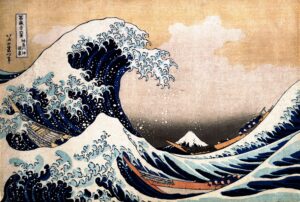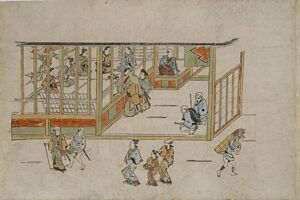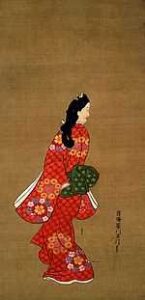The best known and most copied Japanese Wood block is probably “The Great Wave off Kanagawa” by Hokusai created in 1831. I think it is right up there with Picassoo’s “Starry , Starry Night” as far as public popularity. You can see 3 boats being tossed below a large wave, Mount Fiji is in visible in the background. Mount Fiji is often featured in Hokusai’s work but usually dominates the scene. Here it is diminutive. This was the first in the series “Thirty-six Views of Mount Fuji.” The inscription in the box top, left reads: “Thirty-six views of Mount Fuji / On the high seas in Kanagawa / Under the wave.”



